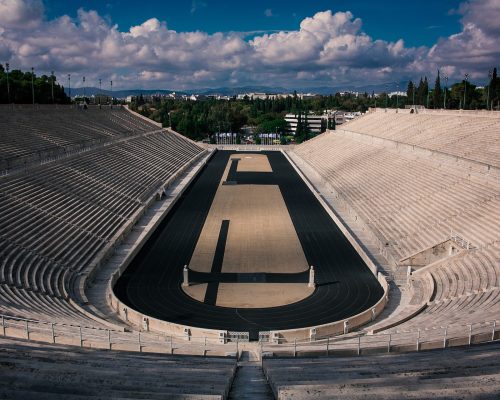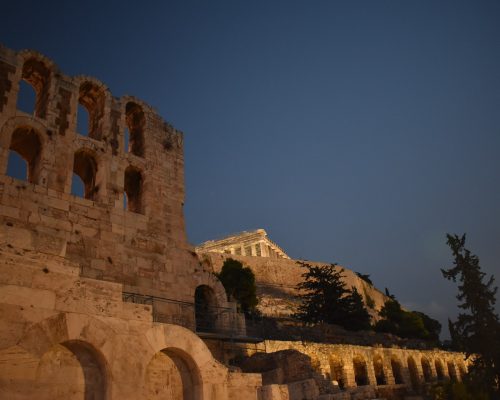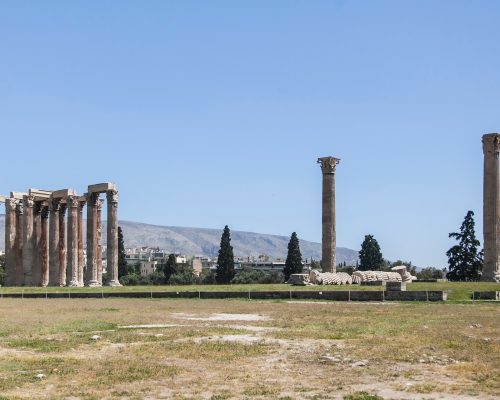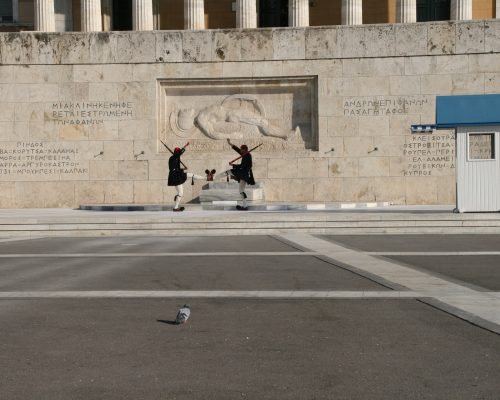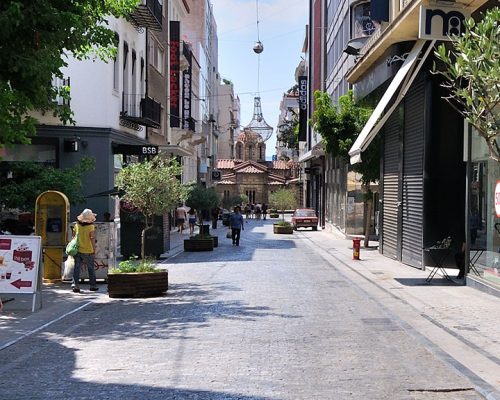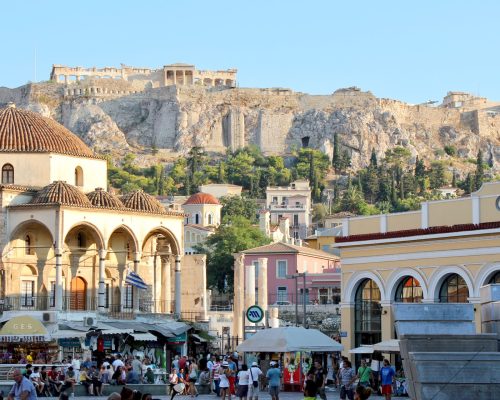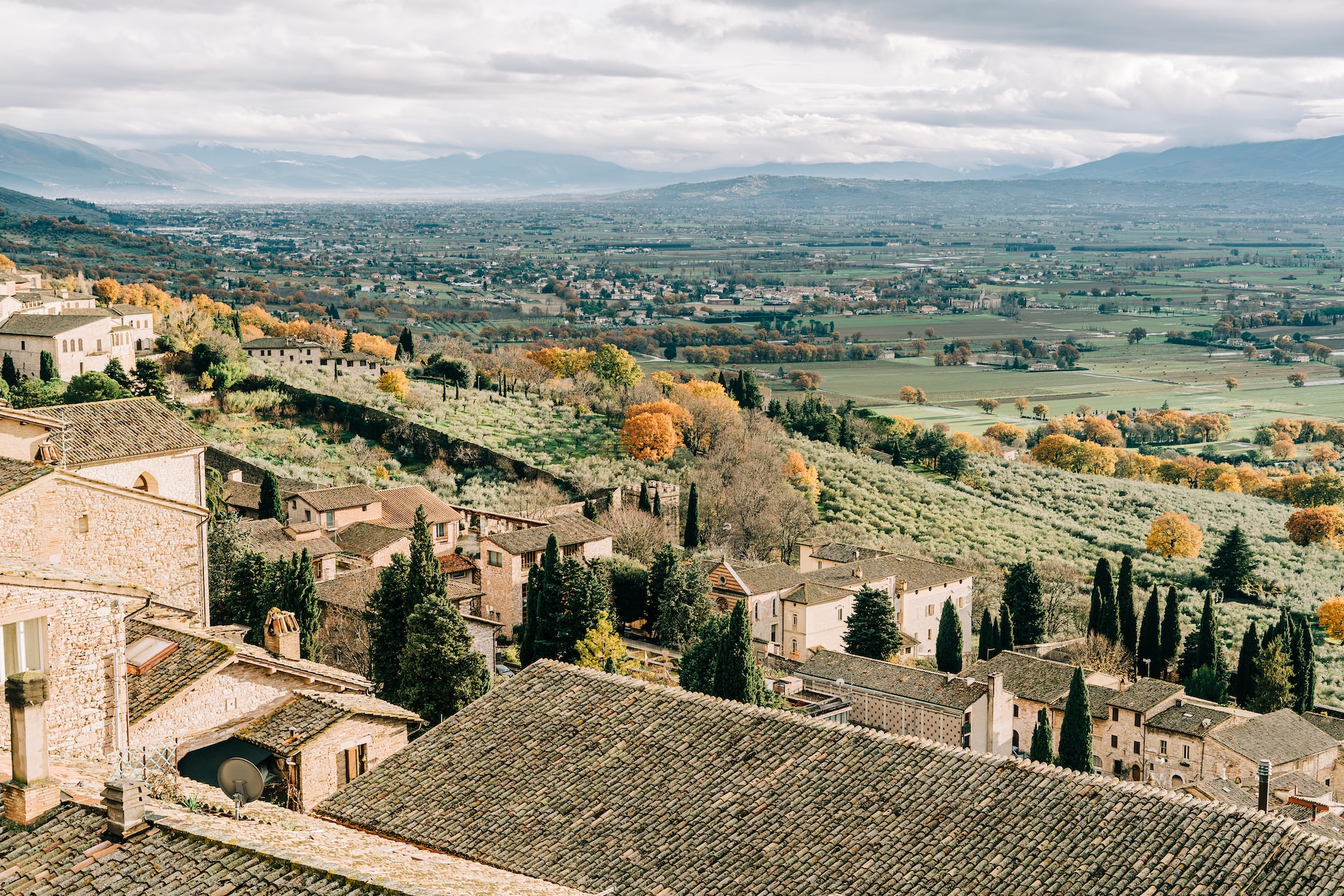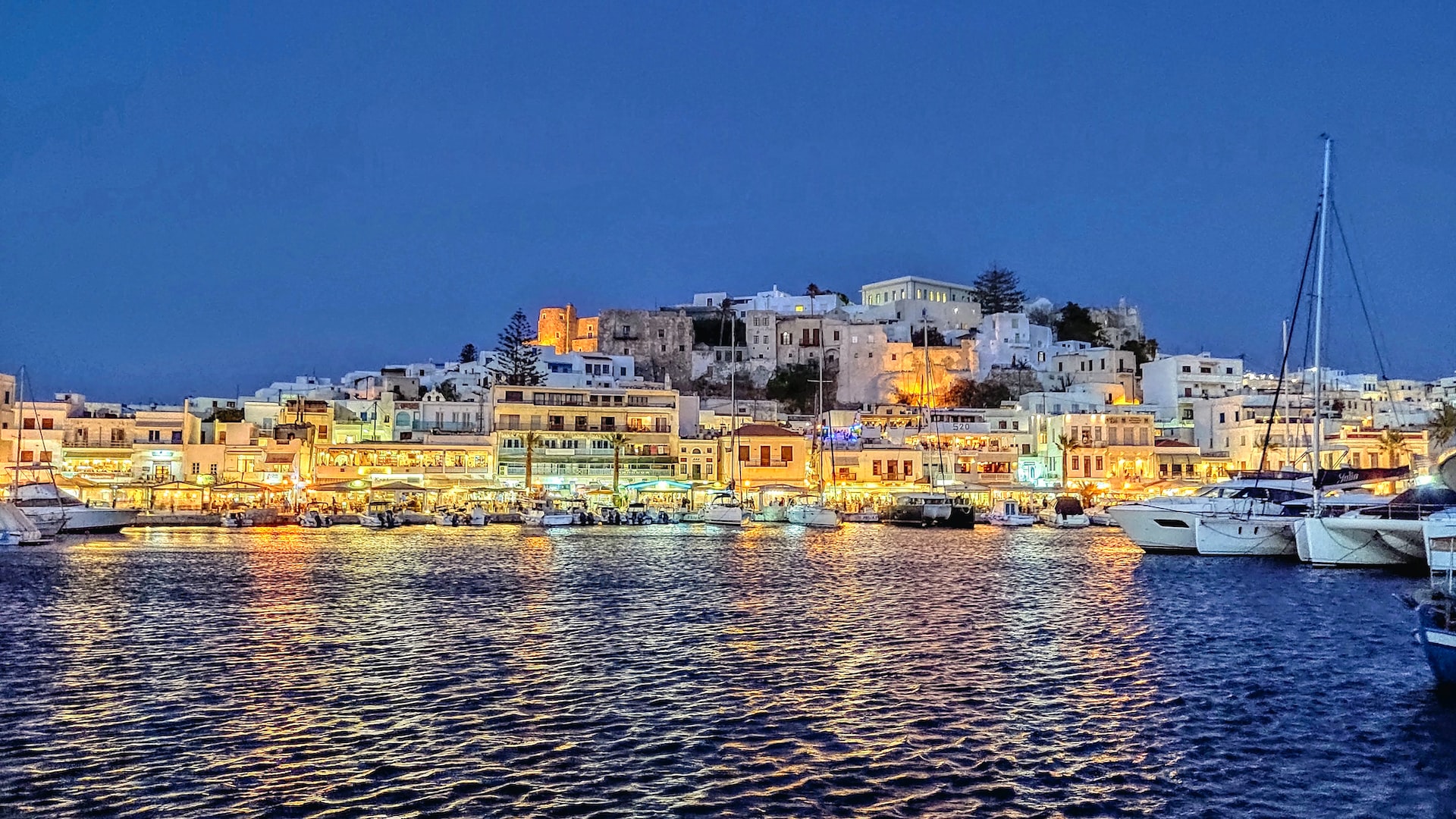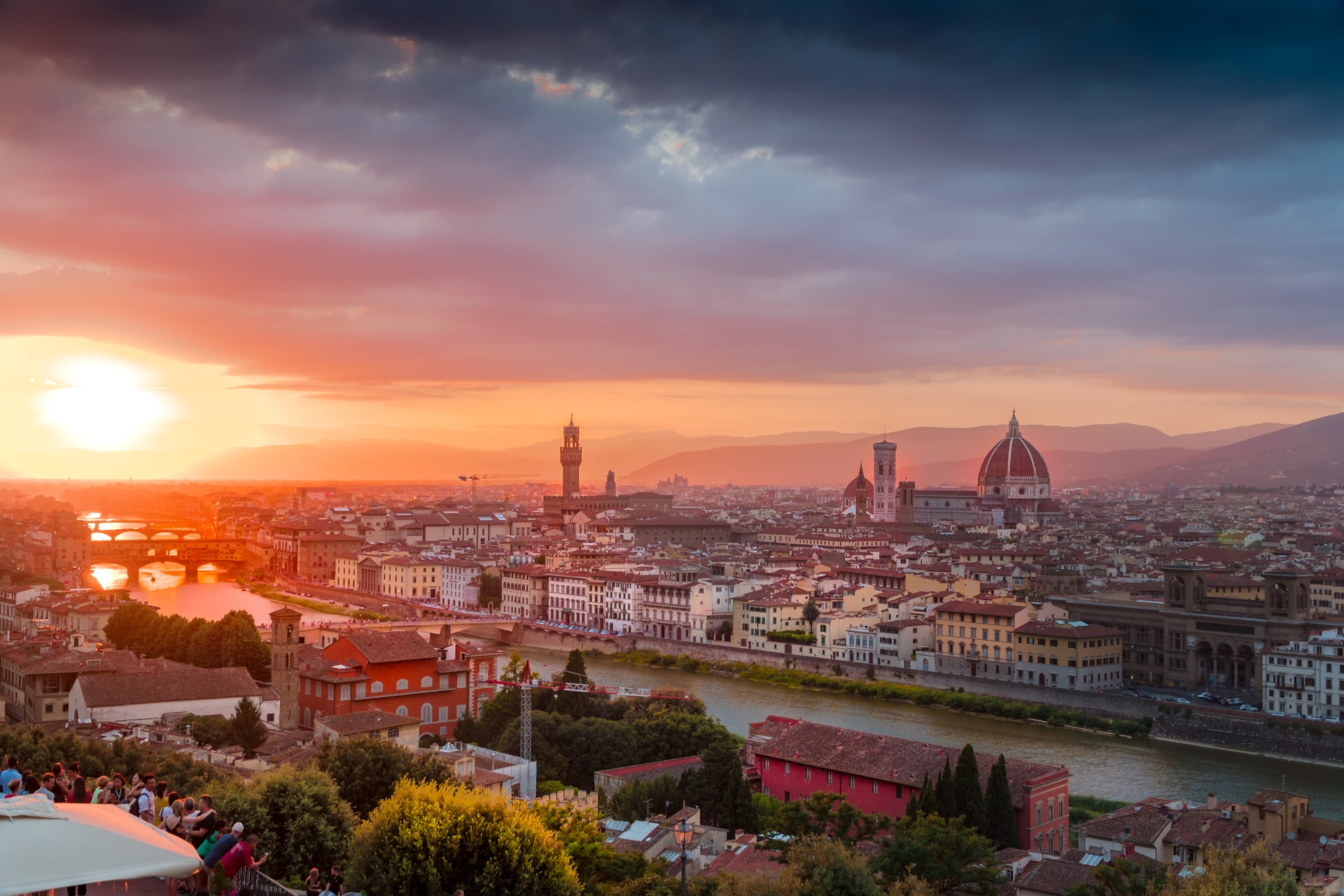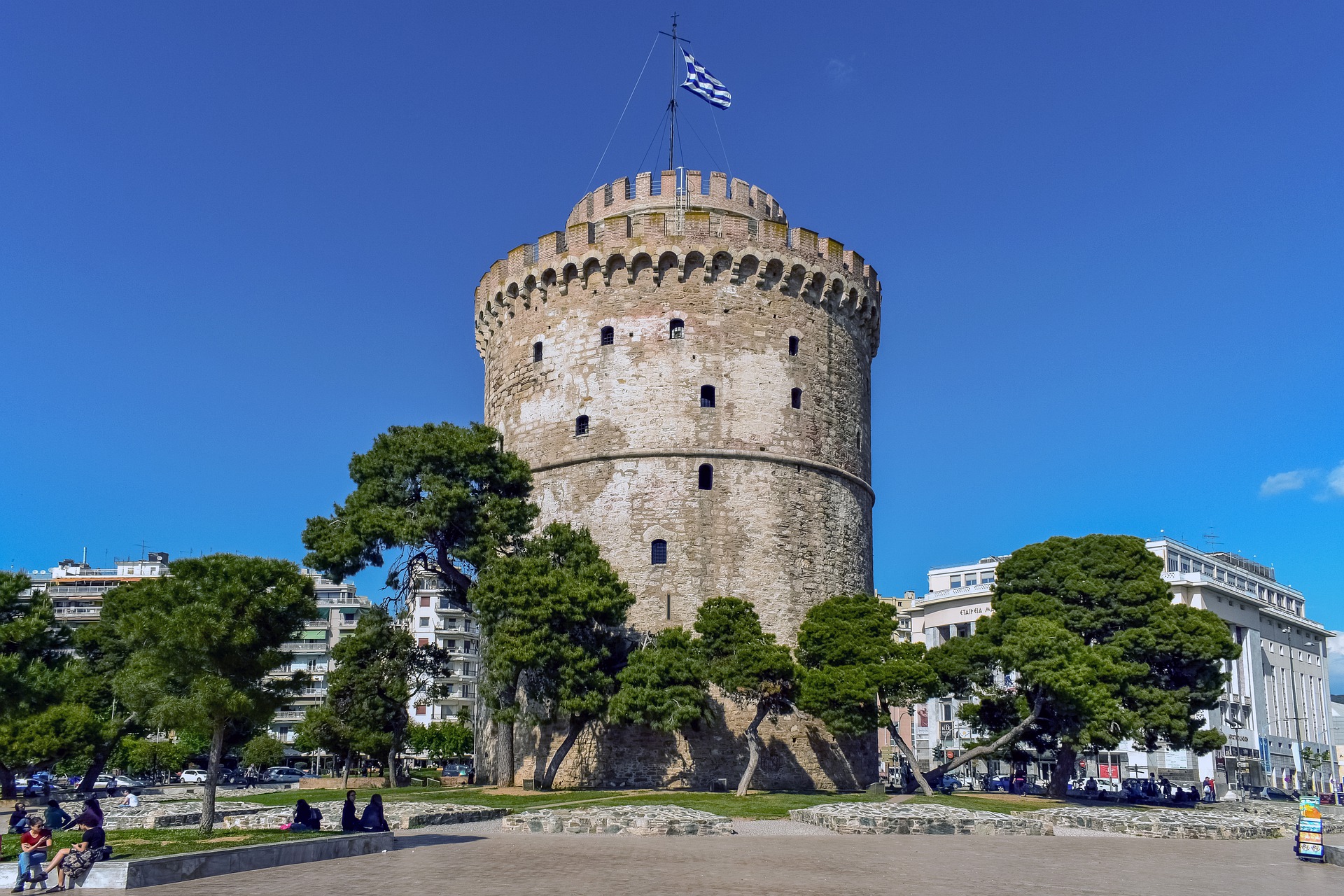What you will find in this article
7. Panathenaic Stadium
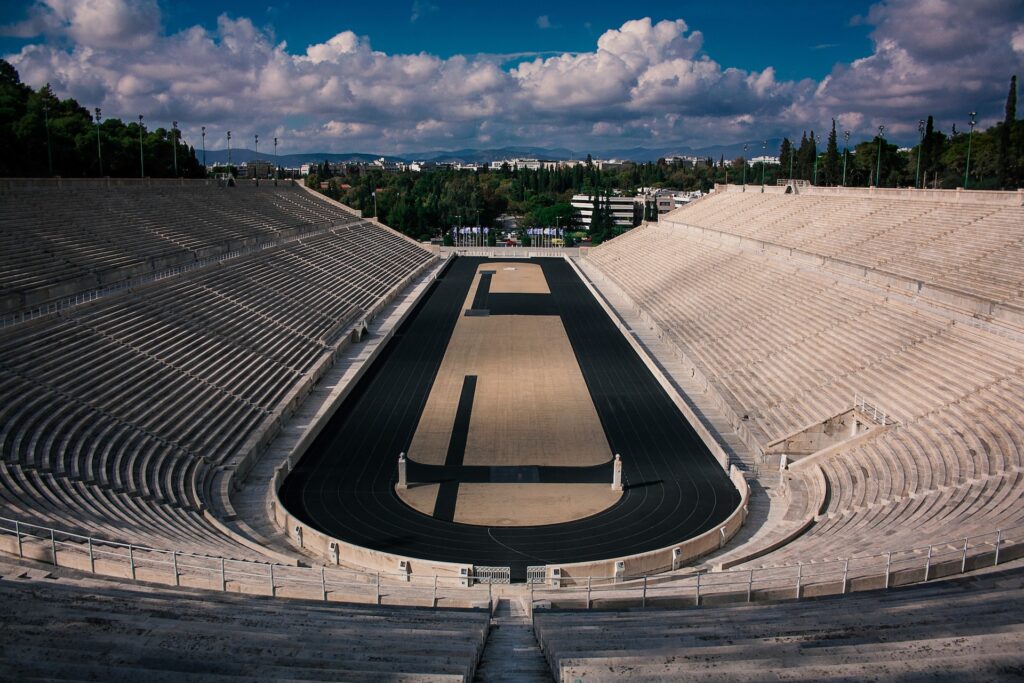
The Panathenaic (or Panathinaiko) Stadium, also known as Kallimarmaro, is a historic stadium in Athens, the only one in the world entirely built with Pentelic marble.
Its fame comes from the numerous events hosted there, starting with the Panathenaic Games, in honor of the goddess Athena, protector of the Greek capital, for which it was built in the 4th century AD. According to legend, in 120 AD, a thousand wild animals were sacrificed in the arena to celebrate Hadrian’s coronation. During the classical era, the stadium featured wooden seats; it was renovated with marble from Mount Pentelicus by Archon Lycurgus in 329 BC. In 140 AD, it was enlarged by Herod Atticus, reaching 50,000 seats.
It remained unused for centuries; in 1895 it was completely restored by a Greek philanthropist to host the first modern Olympic Games, which took place the following year. During the 2004 Olympic Games it served as a picturesque backdrop for the archery competition and the marathon finish. It is occasionally used for concerts and public events and the Athens Marathon finishes there every year.
The current facility is a faithful reproduction of the original one, complete with Pentelic marble seats for 70,000 fans, a race track and a central court.
8. Theater of Dionysus

Sophocles, Euripides and other of the greatest Greek authors used the stage of the Theatre of Dionysus, which is regarded as the most important performance venue in the entire ancient world.
Its ruins stand on the southern slopes of the hill of the Acropolis of Athens: this location was chosen for good sound diffusion, due to its natural terrain progression.
Before the 4th century BC, comedies were staged in the ancient Agora, where spectators sat on wooden tiers of seats. In 498 BC, the Theatre of Dionysus was built, both for the need of a place dedicated to theatrical performances and due to a collapse: the hill of the Acropolis was chosen because its ground contours improved the propagation of sound and because a sanctuary dedicated to the deity was located nearby.
Initially, the theater looked very different from how we see it today and reached its full architectural development during the 4th century BC, when a stage was introduced and the wood of the tiers of seats was replaced by stone. Thrones were built in the front row, the most imposing of which was reserved for the priest of the cult of Dionysus, who sat sheltered in the shade of a canopy, and is easily recognisable by the well-preserved lion’s paws on two sides. In Roman times, the theater was also used for ceremonies and public events.
The Roman era marked the end of this showplace, which slowly fell into disuse, until it was covered by debris in the Byzantine era.
9. Temple of Olympian Zeus
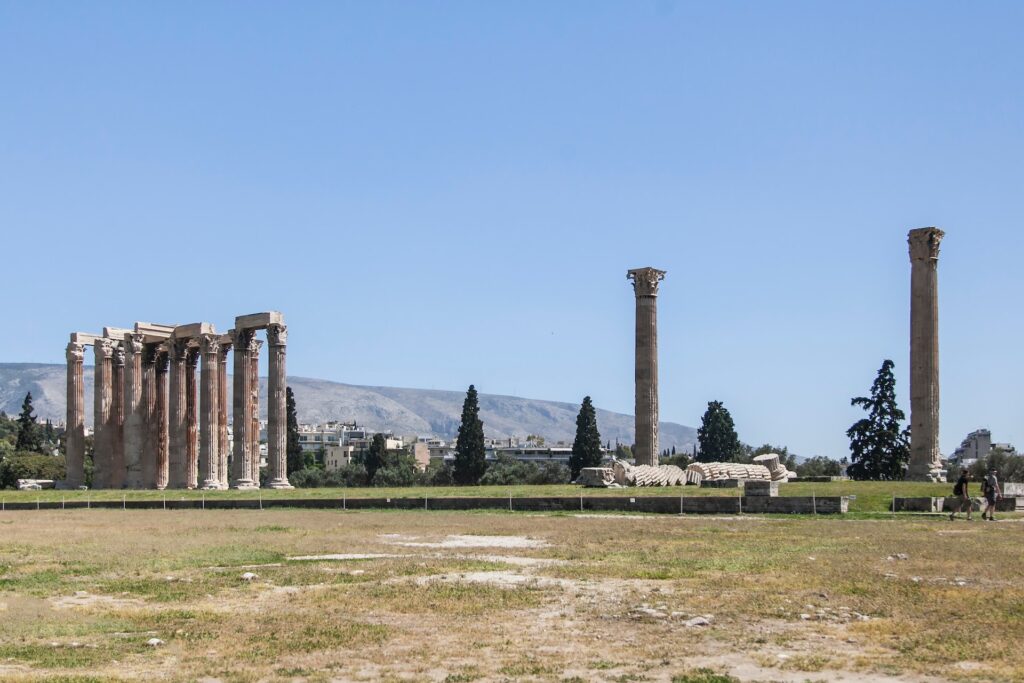
The magnificent Temple of Olympian Zeus, or Olympeion, was built in honour of Olympian Zeus, in marble from Mount Pentelicus.
This temple is the largest in the entire Greece and its construction lasted for more than 700 years: works began under Pisistratus (4th century BC), but were interrupted for lack of funds. Only Hadrian, in 131 AD, completed the work and, inside the temple, next to the large gold and ivory statue of Zeus, arranged a similar-sized portrait of himself.
Today, only 15 of the original 104 Corinthian columns are preserved: these, located on a large expanse of grass, are one of the most important remains from the classical period that are currently preserved.
10. Syntagma Square

Across from the Hellenic Parliament is Syntagma Square, one of the most famous and important squares in Athens and Greece. It occupies the centre of the city and the heart of the Athenians. It is also known as Constitution Square because it was here that, on 3 September 1843, the people demonstrated demanding that King Otto accept the creation of a new Constitution.
The privileged location of the square makes it an obligatory passageway to many of the city’s points of interest.
11. Ermou Street

From Syntagma Square begins Ermou Street, a large street over a kilometer long, one of the few completely pedestrianized streets in the city center, which is home to large shopping centers, shops of the big names in European and world fashion, bars, restaurants and eateries. Along Ermou Street we also find the Monastiraki flea market, where you can buy everything from records to furniture. Ermou Street is served by line 2 (blue) of the Athens Metro, and the main stops to get there are Syntagma and Monastiraki.
12. The Monastiraki district
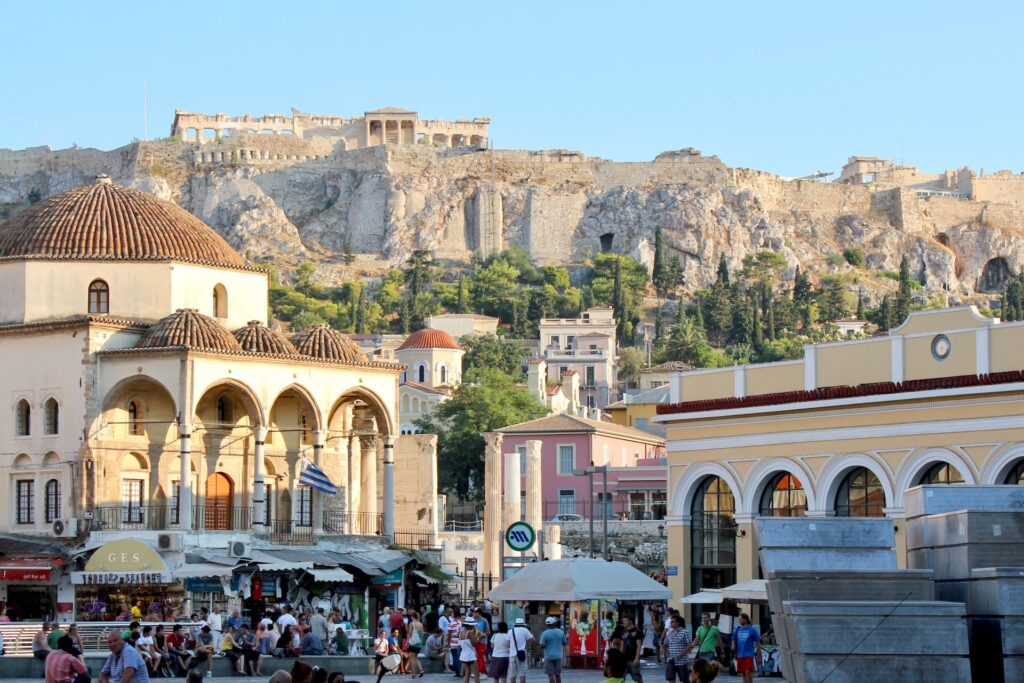
The ruins of Hadrian’s Library, the ancient Agora and the restored Stoa of Attalus with a museum displaying Athenian artifacts are just some of the famous monuments for which the lively Monastiraki district is known Located at the foot of the Acropolis, it also offers visitors the opportunity to visit numerous cultural centers: in the Tzistarakis Mosque, one can see the ceramic collections of the Museum of Greek Folk Art and in Hadrian’s Library, where one can see exhibits from the classical Athenian era. The district is also famous for the city’s main shopping areas. A wide variety of items can be found here, from vintage clothing to more technological items, antiques and books. There are also many open-air restaurants where one can stop to enjoy typical Greek gastronomic dishes.
The main streets of Monastiraki are Ermou, Pandrossou Street and Adrianou Street, but we recommend that you lose yourself in the narrow streets of the area.
13. The Plaka District
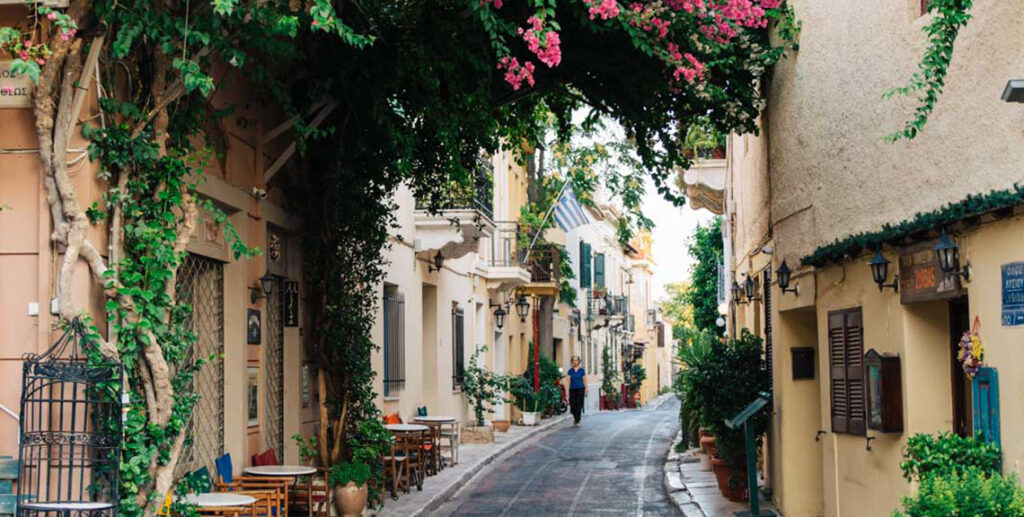
The Plaka district is both one of the oldest areas of Athens and one of the busiest and most attractive districts of the city. Its proximity to the Acropolis has also made it famous as the District of the Gods. In this neighborhood, ancient and modern aspects are mixed up: every day tourists strolling here can admire its narrow, labyrinthine cobbled streets, where beautiful 19th century neoclassical houses stand, giving the place an old-world charm.
Here, tourists can enjoy a wide range of activities, both cultural and leisure: visits to important historical sites (such as the Monument to Lysicrates, the Roman Agora or the Museum of Popular Musical Instruments) can be alternated with shopping in the many souvenir shops or stopping for a tasty break in one of the many restaurants or taverns, to enjoy the best dishes of Greek gastronomy.
14. Mount Lycabettus

Where can one admire Athens from above? Certainly one of the best vantage points is Mount Lycabettus, a small, 278-meter-high mountain in the city’s wealthiest district, Kolonaki.
According to legend, the goddess Athena wanted her temple on the Acropolis to be closer to heaven, so she took a huge rock and placed it on the hill of the Acropolis. While carrying the rock, she received news that surprised her and the 278-meter rock fell on Athens, forming Lycabettus Hill.
The hill owes its name (Hill of the Wolves) to the large number of wolves that lived in its pine forest in ancient times.
During the Classical era, the hill was covered by dense vegetation and a temple dedicated to Zeus was built on top. The appearance of the hill changed during the Turkish occupation, following which the hill remained completely uninhabited.
Between 1880 and 1915, extensive deforestation took place, transforming the hill into the dense mountain it is today.
We recommend climbing the hill at sunset to contemplate the city with the special color of the sun’s rays as it is giving way to the moon. Evening is also a good time to observe Athens illuminated.
